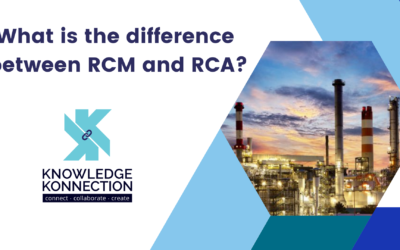
RCM is one of the most effective approaches for establishing and developing as well as improving Preventive Maintenance Programs. Simply put, it makes the system more reliable and safer.
The objective is to preserve and protect functions of the system, i.e. To maintain functions of the system in its existing or original state rather than protecting and conserving equipment. Assessment i.e. Evaluation criteria of RCM is not a very difficult one.
There are seven questions regarding an asset, system, or piece of equipment that is being reviewed.

1. Equipment Functions:
Which equipment functions will you measure and evaluate, and how well should they perform? Initially, one needs to determine the equipment or assets that need to be analyzed, and then determine what and how they work. In order to meet company goals, it is necessary to know how a certain piece of equipment increases customer satisfaction.
2. Functional Failure Modes:
Which types of failures can happen to the piece of equipment you have chosen? One should analyze and determine how equipment can fail or malfunction after determining its functions. In other words, it is important to identify all possible sources of equipment failure.
Functional failures modes can be:
- Human error
- Manufacturing flaws
- Design Failure
- Engine Malfunction, etc.
3. Identify Failure Causes:
How did each failure differ from the others? It is necessary to identify the various causes that can lead to a particular failure of equipment after determining the different failure modes. To put it simply, it is essential to identify the root cause of a failure. An individual should know why a certain failure occurred, what were its main causes.
4. Effect of Failures:
What are the possible consequences of failure for the system if it occurs? In order to identify the overall impact of a failure if it occurs, one needs to identify all possible root causes for failure. In other words, one needs to know how a particular failure will affect the system, productivity, overall cost, quality of the end product, etc. In other words, one needs to know how severe the failure will be.
5. Consequences of Failure:
How does each identified failure affect the bottom line of the company? The effects a particular failure has on the system’s health and environment should be determined after identifying its effect. An individual should be aware of how a particular failure can impact the safety of an individual and the environment in which the system operates as well as its physical condition. These failures can also affect the cost of the system.
6. Establish Preventive Tasks:
How can one prevent each failure from occurring? In order to minimize the risk of failure, one should determine the consequences of failure and then implement methods to prevent them from occurring. Based on severity, criticality, and the needs of the facility, you should choose the most appropriate method to prevent a particular failure. This is a major undertaking and not easy. In addition to being more careful and selective, it is also necessary to identify the most cost-effective maintenance method or task. Any specific task chosen should prevent failure from occurring again.
7. Other Measures:
What other measures can be taken to ensure that failures are addressed quickly if an effective preventive method is not identified? If the maintenance method selected doesn’t work or doesn’t prevent failure from occurring, then one should know what other methods are available and can be applied to prevent failure. Whenever a particular method fails or does not work properly, RCM Team should have a replacement. Finding the right replacement is vital.

Recent Comments